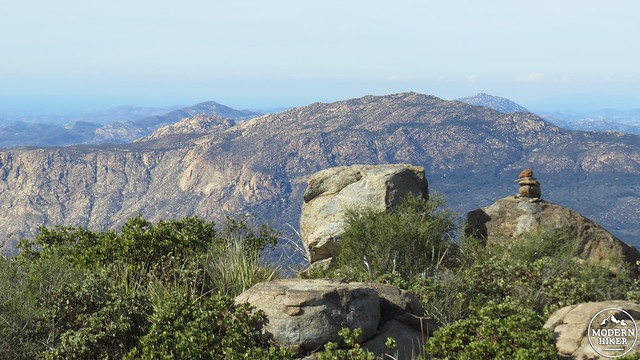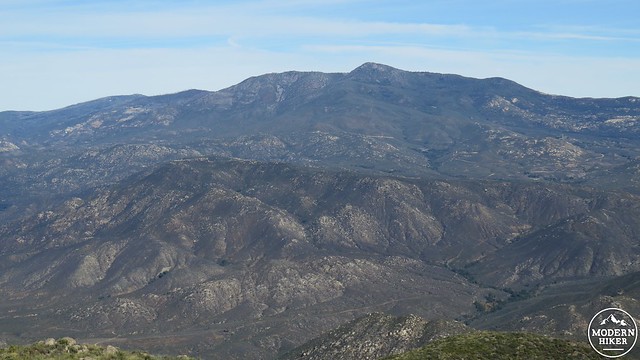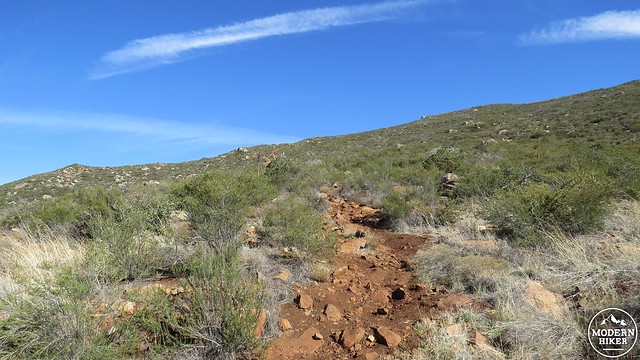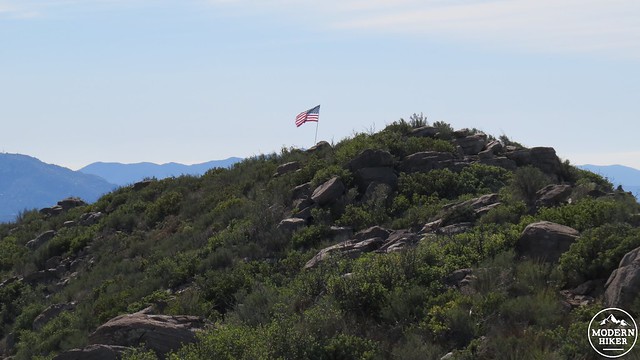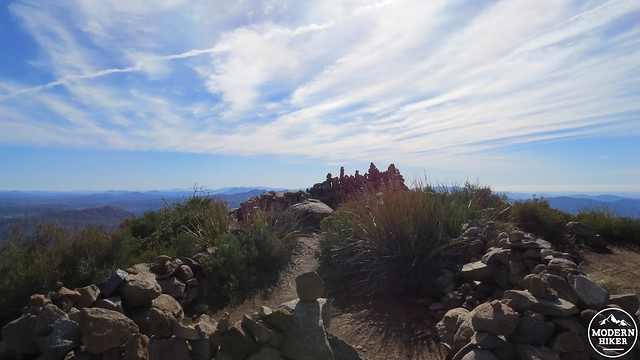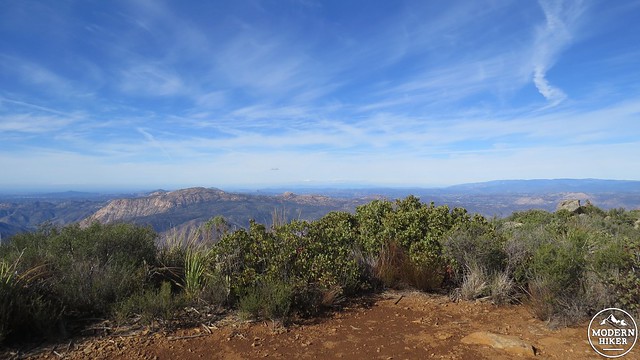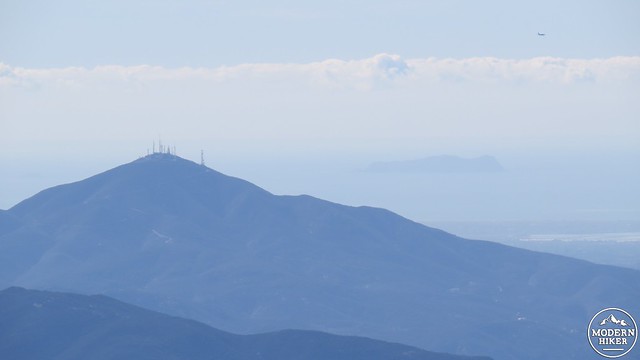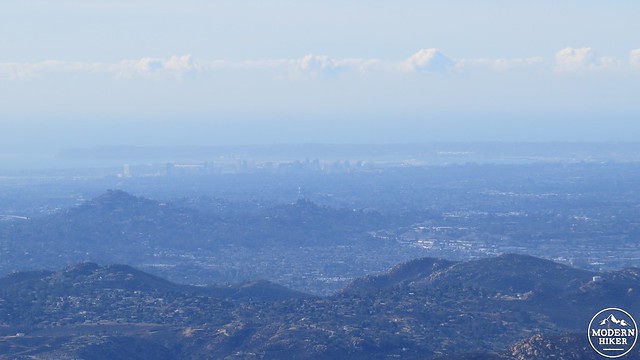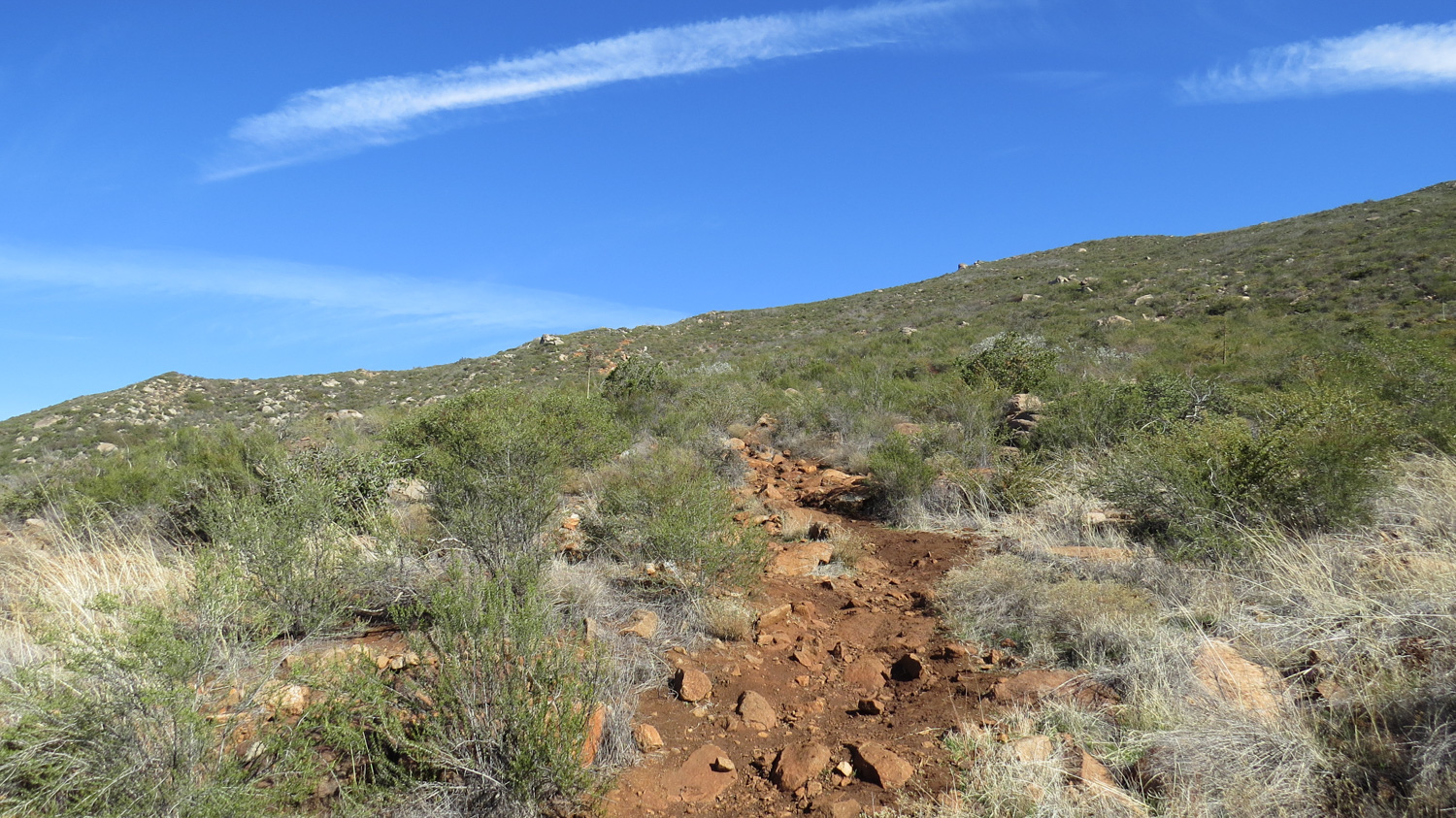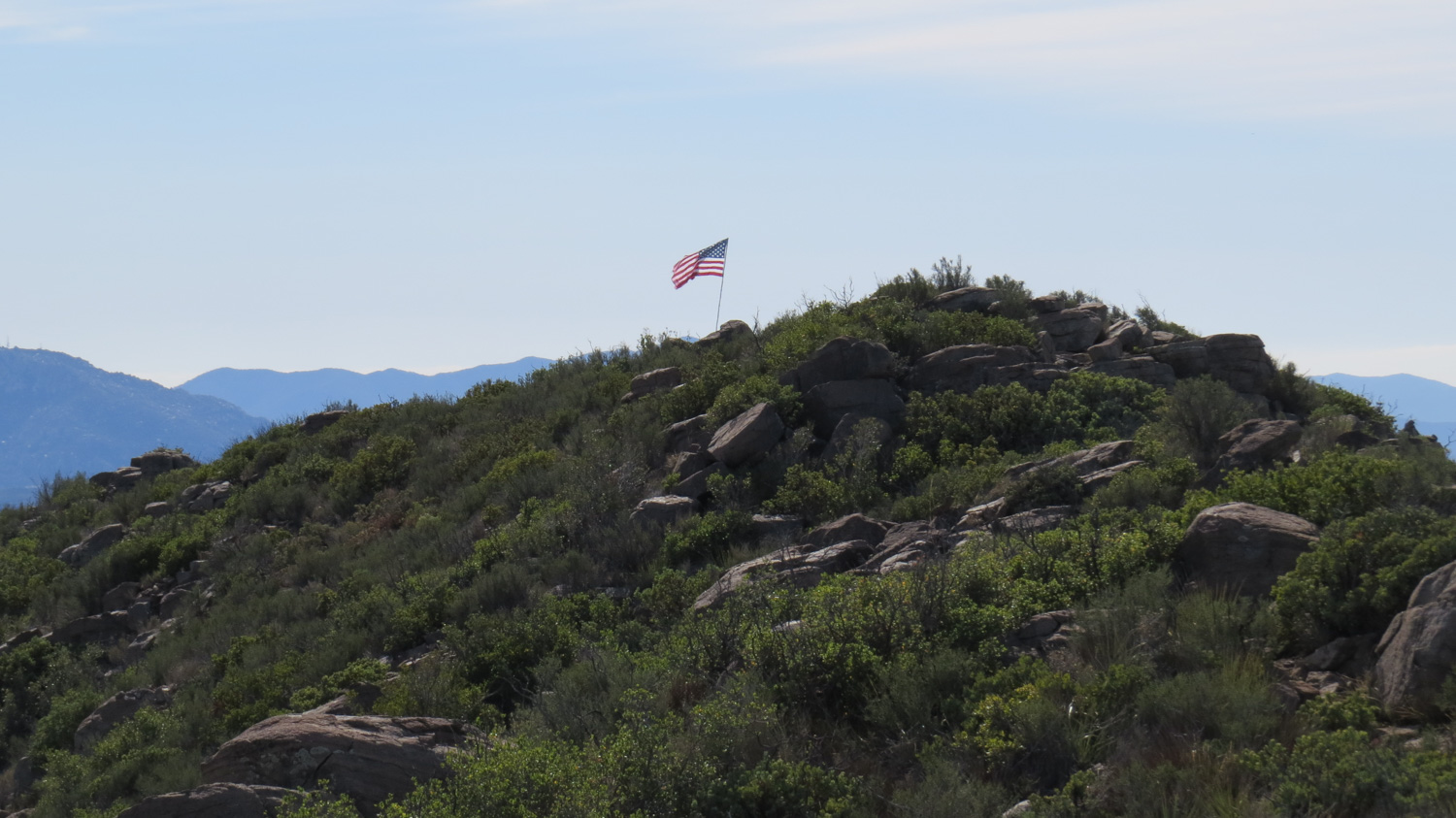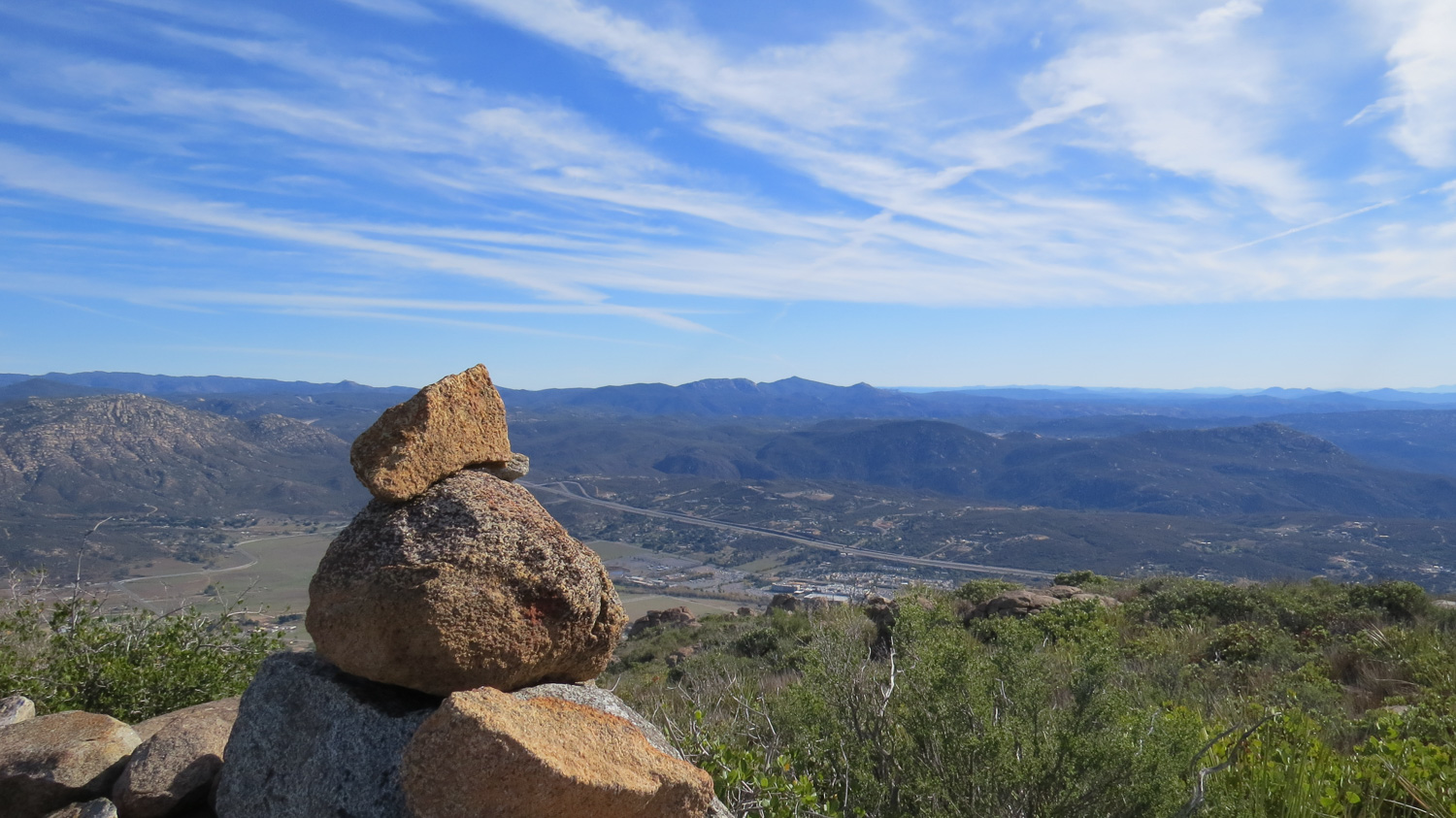Viejas Mountain is a monster. It’s not a monster like El Cajon Mountain, which requires you to climb up and down and then back up and down again some more before it grudgingly gives up its stunning summit views. And, it’s not a monster like the Agua Tibia Loop, which assaults your poor knees and feet with endless miles before revealing its own stellar views. Viejas Mountain is a mini-monster, and it is far more challenging than its modest length implies.
This hike is a beast (beastlet?) for the following reasons: first, the entirety of this hike occurs on a south-facing slope with absolutely no cover. Second, the grade of the trail is extremely steep, and even seasoned hikers will fight to keep oxygen in their lungs. Third, the trail is a rugged, unmaintained route kept alive by hikers despite being rocky, slippery, and unrelenting. Finally, you will gain an average of 1,000′ per mile, which is usually when hikers begin saying “You have GOT to be kidding me!”
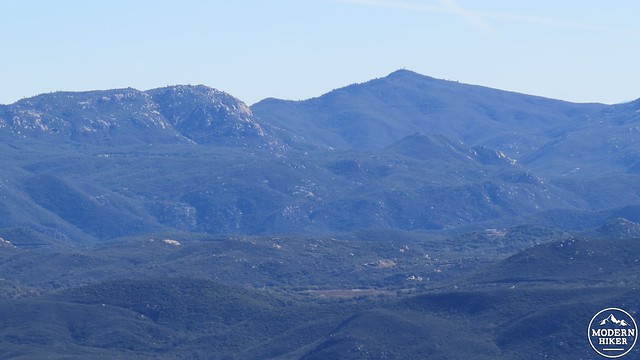
Corte Madera Mountain on the left and Los Pinos on the right
With all of those knocks against this trail, you might be wondering why Modern Hiker is presenting and even recommending this hike. In addition to the above details, this is not a trail to hike when it is warm outside, as heat and sun exposure could set the stage for a very bad time. Moreover, this is not a trail to hike when the atmosphere is anything less than crystal clear, as the principal reward on this hike is the view. So why?
The “why” lies in the fact that the views from the summit of Viejas Mountain are nothing short of breathtaking. From the top, you can survey an unobstructed 360 degree panorama that includes nearly every major geographic feature west of the Peninsular Ranges. One can see 50 miles into Northern Mexico while also glimpsing the snow-capped summits of Mt. Baldy, Mt. San Jacinto, and Mt. San Gorgonio. The southern Channel Islands will rise up out of the cobalt blue arc of the ocean, while every major and minor peak from Cuyamaca to Point Loma lies within view.
The hike itself is a straightforward, albeit arduous affair. If the gate is open, you can park your car opposite the unofficial trailhead. If the gate is closed, you can park off the side of Anderson Fire Road and pass through the gate, adding about .5 mile to the route. Be sure to display your Adventure Pass in either instance. Once you find the rough trail on the east side of the road, begin climbing and do not stop until you can climb no further. There are no junctions, no changes of scenery beyond the evolving view, and no noteworthy places to stop. It’s nothing but a simple and devilishly rough climb up the side of a mountain.
When you reach the summit ridge, your choices will increase modestly. You can walk southwest toward the American flag or northeast toward the true summit. This track continues northeast as it undulates along the increasingly scrubby ridge. In the past before the 2003 Cedar Fire, which swept the entirety of Viejas Mountain, vegetation overgrowth was a problem. It may become so again as the chaparral continues its post-fire recovery. Even now, the trail is a bit overgrown with the primary culprit being Our Lord’s Candle yucca plants, which are also known by an array of choice swear words for their tendency to impale unsuspecting shins and calves.
After 1.8 miles, you will reach a hand-made rock shelter used by overnight campers. Viejas Mountain would make an interesting backpacking experience, particularly on a clear, warm, full moon night. As helpful as rock shelters are, this particular shelter is a bit of a tragedy in terms of human history. Before the shelter was built, a structure stood that was used to locate a specific peak at the Winter Solstice, which was undoubtedly a part of Kumeyaay ritual prior to the arrival of the Europeans. It had likely stood on this spot for hundreds of years, and it was a lasting artifact of Native American life. Now, it is a wind shelter for backpackers.
The rock shelter is the end of the line, although you can spend many happy minutes (or hours) exploring the summit ridge to gain more advantageous views of the surrounding environment. Half of San Diego, a considerable chunk of Mexico, and slivers of Orange, Riverside, San Bernadino, and Los Angeles Counties lie spread out below your feet. When you have seen all you care to see, make your careful and cautious way down the steep slope to return to your car.



